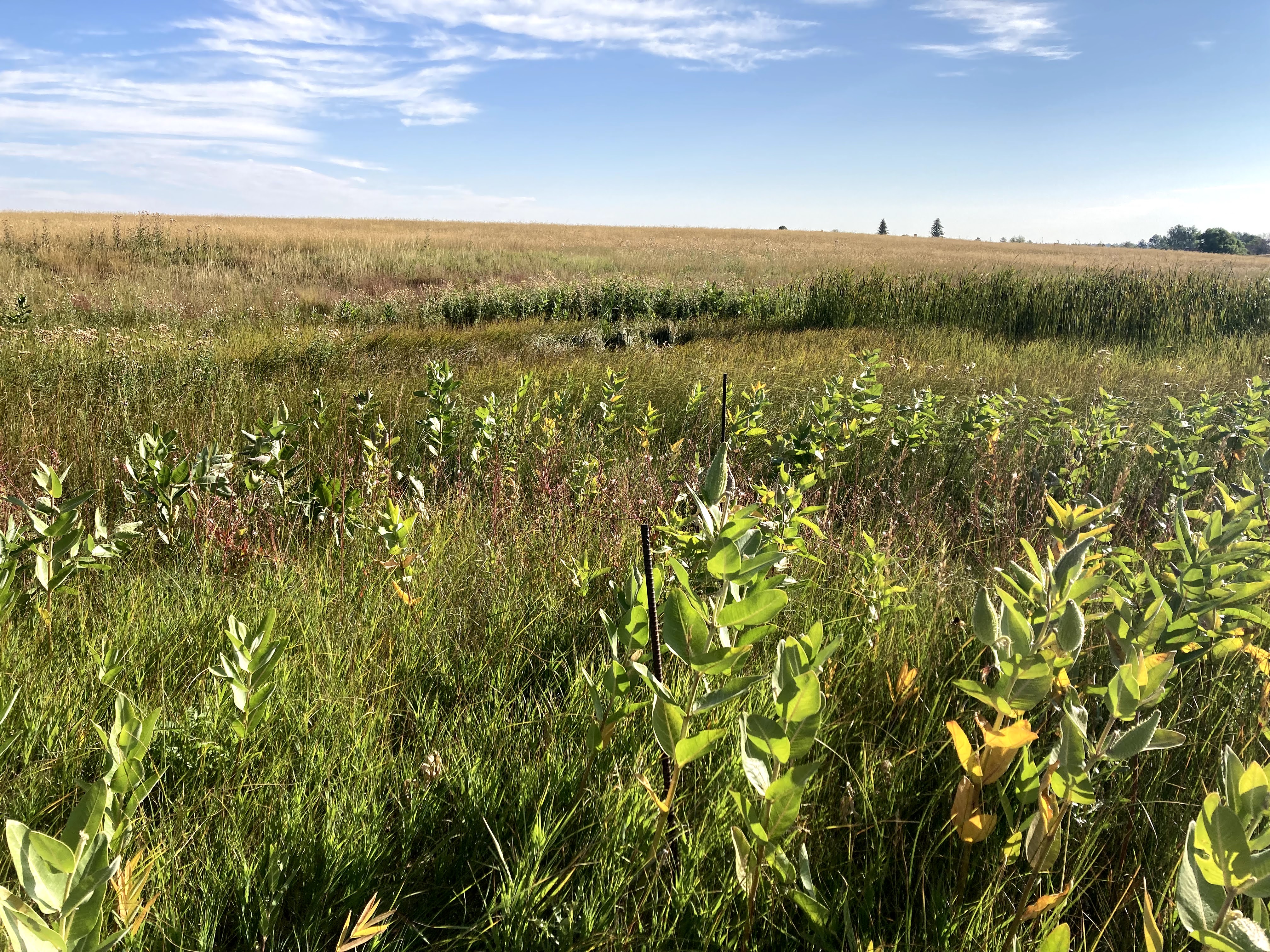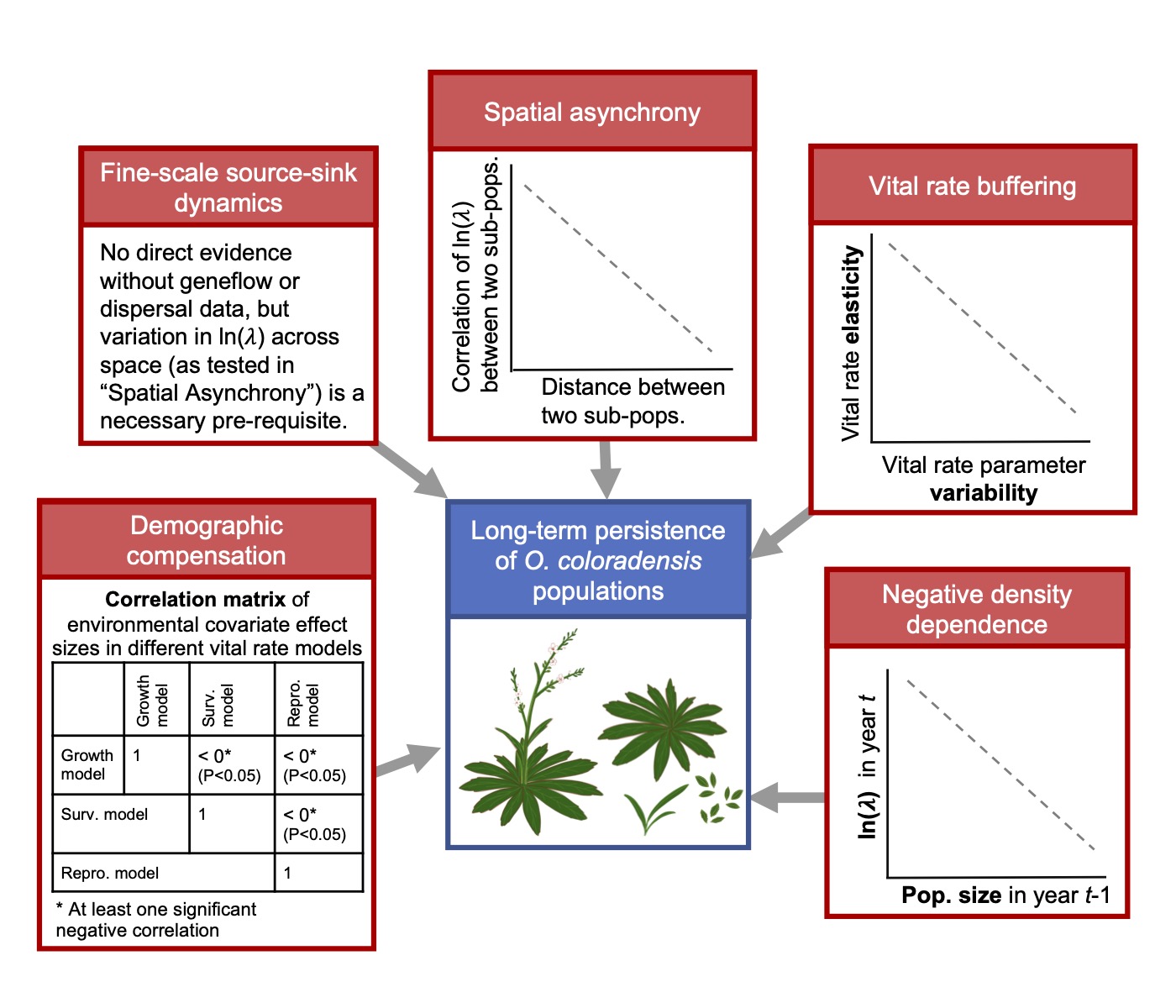Demographic mechansims of persistence for the rare monocarpic perennial *Oenothera coloradensis*
This project is a collaboration with Bonnie Heidel, Maria Paniw, Roberto Salguero-Gómez, and Daniel Laughlin, with funding from the Wyoming Native Plant Society and the US Fish and Wildlife Service.
By Alice Stears in Publications rare species
February 24, 2023

The persistence of naturally rare species has long been a motivating question for ecologists. Classical theory implies that community dynamics should be driven by common species, and that natural selection should not allow small populations of rare species to persist over long periods. And yet, a majority of the species found on earth are rare. Rare species contribute to diversity, community stability, and ecosystem function, and several mechanisms have been proposed to explain their persistence. We used size-based integral projection models (IPMs) to examine the population dynamics of Oenothera coloradensis, a rare, endemic, monocarpic perennial forb, and determined whether any of five proposed demographic mechanisms for rare species persistence were acting in populations of this species. We also evaluated the importance of including a discrete seedbank stage in population models of this species.

The five proposed mechanisms of rare species persistence we tested in populations of O. coloradensis: Demographic compensation, vital-rate buffering, small-scale source-sink dynamics, spatial asynchrony, and negative density dependence.
We determined that the seedbank is important for O. coloradensis, and that including a seedbank stage in population models has a significant impact on modeled population growth rate. IPMs that included a size-based continuous state and discrete seedbank state indicated that neither negative density dependence, demographic compensation, vital rate buffering, spatial asynchrony, nor fine-scale source-sink dynamics are acting to maintain the positive growth we observed in O. coloradensis subpopulations. Instead, we propose that high micro-site abundance allows this species to sidestep the demographic and genetic challenges of small population size that rare species typically face.
- Posted on:
- February 24, 2023
- Length:
- 2 minute read, 256 words
- Categories:
- Publications rare species
- See Also: